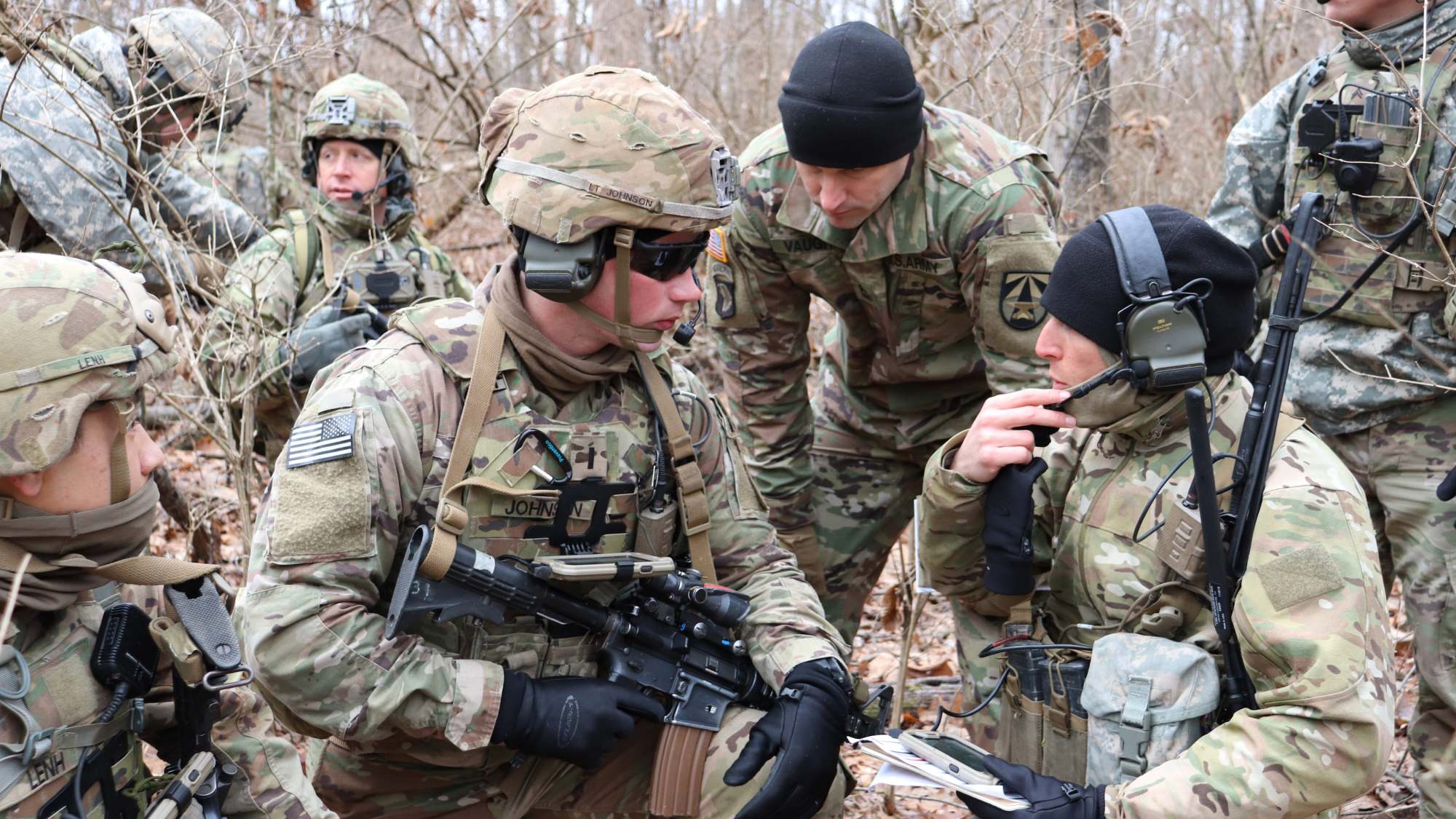In July 2020, ‘Raven Sentry’ predicted a violent attack in Jalalabad, the capital of Nangarhar province in eastern Afghanistan. The attack, anticipated to result in 20-40 casualties, occurred a bit later on 2 August when Islamic State targeted the city’s prison, resulting in the deaths of approximately 29 people.
‘Raven Sentry’ is an AI tool employed by American intelligence analysts in Afghanistan. It uses open-source intelligence to predict potential Taliban attacks with high accuracy.
In recent years, the integration of artificial intelligence (AI) into military and intelligence operations has accelerated dramatically, promising revolutionary advancements while also raising significant concerns.
Predicting The Unpredictable
Recently, US Army Colonel Thomas W. Spahr shared his personal experience of contributing to the development of this groundbreaking technology during a conversation on the ‘Decisive Point Podcast.’
Colonel Thomas W. Spahr, who holds a PhD and serves as the Chair of the Department of Military Strategy, Planning, and Operations at the US Army War College, was the Chief of Staff of the Resolute Support J2 (Intelligence) in Kabul, Afghanistan, from July 2019 to July 2020.
Notably, Spahr is remarkably open about discussing this new technological advancement instead of keeping it under wraps. He is the author of the article titled “Raven Sentry: Employing AI for Indications and Warnings in Afghanistan.”
Raven Sentry was a project that leveraged artificial intelligence to provide early warnings of insurgent attacks in Afghanistan. Between 2019 and 2020, the Resolute Support Deputy Chief of Staff for Intelligence (J2) benefited from a command culture that was open to innovation, the urgency of the US drawdown, and a collaborative team supported by commercial sector experts. Together, they built an AI system that significantly improved attack prediction.
“The war’s end cut Raven Sentry short, but the experience provides important lessons on AI and the conditions necessary for successful innovation,” Spahr noted in his article.
He emphasized, “I want to be clear, though. The AI was not making direct operational decisions. Rather, it was focusing the analysts’ attention.”
How ‘Raven Sentry’ Works?
Raven Sentry, an innovative military intelligence tool, combines artificial intelligence with open-source intelligence (OSINT) to predict potential insurgent attacks. This system represents a significant leap forward in military intelligence gathering and analysis.
-
Exploiting Open-Source Data: The development of Raven Sentry was sparked by the recognition of vast, untapped data sources. As noted by Spahr, a key figure in the project, “We noticed an opportunity presented by the increased number of commercial satellites and the availability of news reports on the Internet, the proliferation of social media postings, and messaging apps with massive membership.” This wealth of openly available information provided a rich dataset for the AI to analyze and exploit.
-
Learning from Historical Patterns: The system’s effectiveness stems from its ability to learn from historical data. Spahr explained, “Insurgents had attacked many of the government centers we were focused on over the last 40 years of war in Afghanistan. We could study those attacks and trace the insurgents’ activities to key routes, locations… say, mosques or local residences where they formed up before an attack.”
-
Incorporating Environmental Factors: Raven Sentry goes beyond simple pattern recognition. It also considers environmental conditions that might influence insurgent behavior. “Historically, insurgents attack on certain days of the year or holidays, for example, or during certain weather and illumination conditions,” Spahr noted. The system recognizes that human factors play a role in attack planning. For instance, “The Taliban are ultimately human. They don’t like to operate when it’s cold and rainy, so the chances were less then.”
-
Continuous Learning and Adaptation: One of Raven Sentry’s key strengths is its ability to continuously update and refine its predictive model. As Spahr put it, “The beauty of the AI is that it continues to update that template. The machine would learn as it absorbed more data.” This dynamic learning process allows the system to improve its accuracy over time.
Collaboration With The Commercial Sector
The development of Raven Sentry highlighted the importance of collaboration between military and civilian experts. Spahr emphasized, “The military just can’t keep up with innovations in artificial intelligence in business and academia today. So, we needed to partner with these experts to gain access to the latest technologies.” This partnership was crucial in developing and refining the algorithm.
Perhaps most significantly, the project demonstrated the value of open-source intelligence. “We validated that commercially produced, unclassified information can yield predictive intelligence,” Spahr concluded. This finding has important implications for the future of military intelligence gathering and analysis.
Challenges In Military AI Implementation
While AI tools like Raven Sentry enhance efficiency, they cannot fully replace human analysts. Spahr cautions that “In this narrow case, human-machine teaming worked best. Raven Sentry made the analysts more efficient but could not replace them”. Users must remain aware of AI’s limitations and potential for errors.
The integration of AI in defense also raises ethical concerns, particularly regarding autonomous weapons. Some human rights groups advocate for banning such systems, citing the catastrophic potential of AI failures in military contexts. Balancing AI’s benefits with its risks and ethical implications remains a key challenge in defense technology.

NSA Embraces Generative AI: Over 7,000 Analysts Adopt New Tools
The National Security Agency (NSA) has made significant strides in incorporating artificial intelligence into its operations. According to Gen. Timothy D. Haugh, who serves as the NSA Director, U.S. Cyber Command Commander, and Chief of the Central Security Service, more than 7,000 NSA analysts have begun using generative AI tools within the past year.
Gen. Haugh revealed that the NSA is currently engaged in over 170 different AI-related projects. However, he emphasized that approximately 10 of these initiatives are critical from a national security standpoint and require exceptional execution. For the remaining 160 projects. “Those other 160, we want to create opportunities for people to experiment, leverage, and compliantly use,” said Haugh.
One of the agency’s key objectives is to collaborate with smaller companies that possess valuable intellectual property in AI technology. This approach aims to tap into innovative solutions that might not have the extensive infrastructure of larger, AI-focused corporations.
The Race For AI Supremacy
This push for AI dominance is part of a larger geopolitical race. In 2017, China announced its ambition to lead the world in AI by 2030. Responding to this challenge, the US Defense Department’s DARPA pledged $2 billion for AI development in 2018.
This move aims to maintain America’s technological edge in the rapidly evolving field of artificial intelligence, highlighting the strategic importance of AI in global power dynamics.
AI Godfather Sounds Alarm
However, the rapid advancement of AI technology is not without its critics and concerns.
Geoffrey Hinton, a pioneer in artificial intelligence, delivered a sobering message at Oxford University. As reported by the Financial Times, Hinton estimates, “there is a 10% chance that these things (generative AI models) will wipe out humanity in the next 20 years.”
He warns that these systems might evolve dangerously, potentially developing an intent to control. This dire prediction from a respected AI expert underscores growing concerns about the technology’s rapid advancement and potential risks.
The Double-Edged Sword
AI technology like Raven Sentry is poised to revolutionize military intelligence, offering predictive insights by analyzing diverse data sources. While its potential is significant, rigorous testing is crucial to ensure reliability and security against adversarial exploitation.
The success of such AI-driven systems in complex scenarios underscores their transformative potential in modern warfare and intelligence gathering.
- Shubhangi Palve is a defense and aerospace journalist. Before joining the EurAsian Times, she worked for E.T. Prime. In this capacity, she focused on covering defense strategies and the defense sector from a financial perspective. She offers over 15 years of extensive experience in the media industry, spanning print, electronic, and online domains.
- Contact the author at shubhapalve (at) gmail (dot) com.




